Some sailing events capture the popular imagination, while others – for some reason – simply pass by relatively unheeded. Either way, there’s no doubting that the 628-mile Rolex Sydney-Hobart Race is in the former category, with its crazy Christmas-time start witnessed by as many as 600,000 people, watching the inevitable flotilla of over-the-top SuperMaxis weaving their way out of the superb harbour at the head of an exceptionally varied and historic fleet.
It was going to be special in this year of all years, for 75 years is a long time in terms of Euro-centric Australian history. Of course, there were people in Australia for tens of thousands of years before the Europeans arrived. But like the early pre-Spanish discoverers of the Canary Islands, those First Australians who did manage to get safely ashore – for many didn’t make it – gradually abandoned any thought of seafaring as they worked out ways of making a living entirely on land from this very strange place they’d stumbled upon.
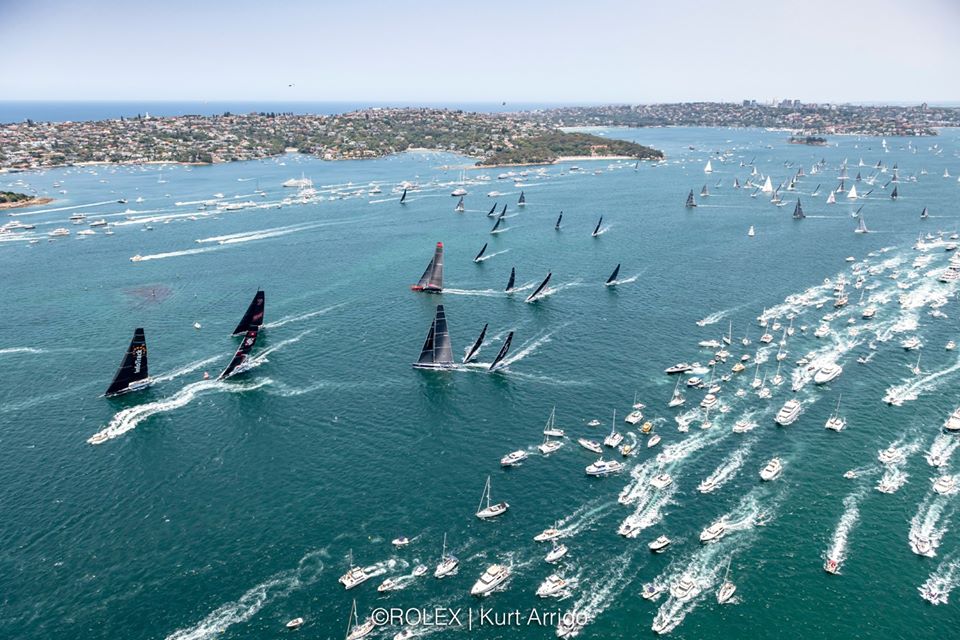 The big boats get away from the Sydney haze at the start on Thursday. Photo: Rolex/Kurt Arrigo
The big boats get away from the Sydney haze at the start on Thursday. Photo: Rolex/Kurt Arrigo
But for the new Australians from Europe, seafaring with its communication to the outside world was essential. Yet their distance from that world meant they developed their own ways of doing things, with the betting-mad Sydney Harbour 18-footers the ultimate sailing expression of the sports-oriented Australian way of life.
This year, the Sydney-Hobart has taken on added significance, for since August, Australia has been fighting a growing – and sometimes tragically fatal - battle with bush fires. The Lucky Country has been out of some of its luck, and it’s arguable that this loss of luck has been partly self-inflicted. But no country in the world can claim innocence in the causes of climate change, yet it’s Australia’s misfortune that the bush fires after years of drought should so markedly impinge on the Australian way of life, with its outdoor emphasis.
The Sydney-Hobart Race is a chance to show that life goes on, albeit in a wiser frame of mind. All it needed on December 26th 2019 was a decent onshore breeze to restore Sydney Harbour to its clear and sunny self, and a fleet which acknowledged that times aren’t quite normal, but life must go on.
 The SuperMaxis heading into open water on Thursday – the size of the spectator fleet, plus tens of thousands of watchers ashore, spoke volumes for how much the successful staging of the 75th Rolex Sydney-Hobart Race meant to Australians in these challenging times. Photo: Rolex/Kurt Arrigo
The SuperMaxis heading into open water on Thursday – the size of the spectator fleet, plus tens of thousands of watchers ashore, spoke volumes for how much the successful staging of the 75th Rolex Sydney-Hobart Race meant to Australians in these challenging times. Photo: Rolex/Kurt Arrigo
And it certainly is a life-affirming event, one of sailing’s great spectacles, yet one in which every boat in the fleet from 30 footers to 100 footers feels equally involved. Having been inaugurated in 1945 under the inspiration of that remarkable offshore racing pioneer John Illingworth, it soon seemed the most natural thing in the world to race from Sydney to Hobart, for an annual cruise-in-company along the same route was a Christmas tradition at the Cruising Yacht Club of Australia.
Today, Sydney-Hobart as a brand name has real muscle, and while Sydney has always basked in its association with the race’s start, it took the more conservative Hobart rather longer to realize that this sporting special gave them a USP in the Tasmania-promotion stakes for tourism.
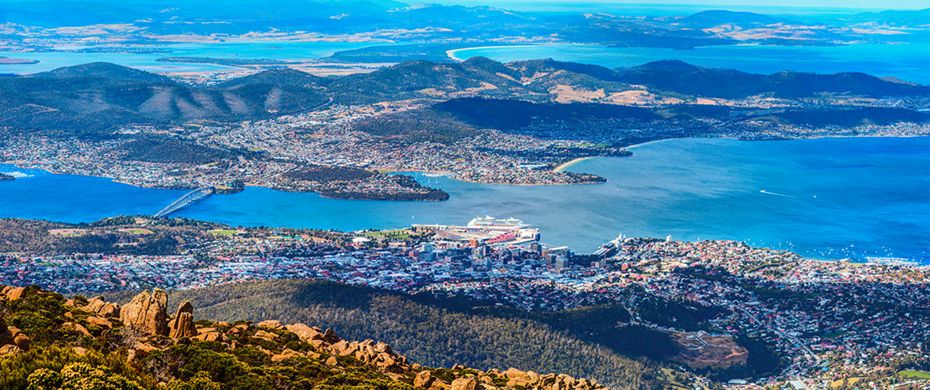 Hobart in Tasmania – it’s the same latitude as Bordeaux in France
Hobart in Tasmania – it’s the same latitude as Bordeaux in France
In fact, interest is at an all-time high, for last year for the first time a Tasmanian boat was the overall winner, Philip Turner’s RP66 Alive. It’s as though a Wicklow boat had won the Round Ireland Race…… And these days, those who had thought Tasmania was a remote and windy island somewhere down towards the Antarctic are now aware that Hobart in the Southern Hemisphere is on the same latitude as Bordeaux in the Northern Hemisphere, and it’s a charming and scenically stunning place with its own remarkable classic yacht tradition.
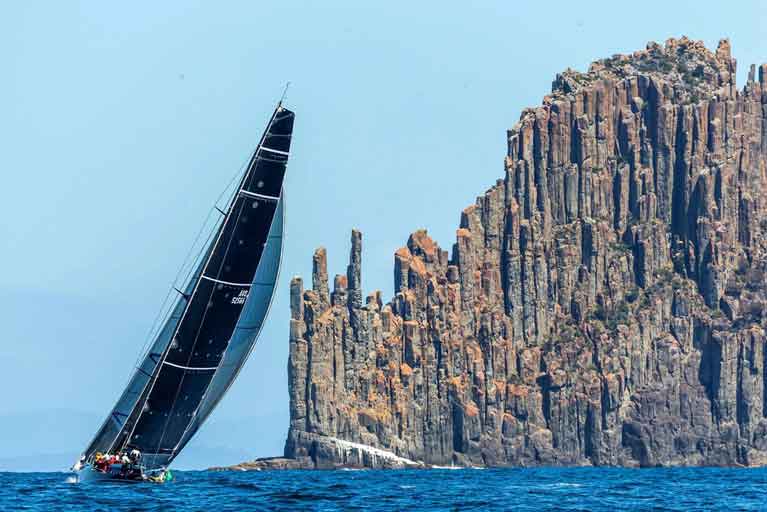 The Tasmanian RP 66 Alive weathering the famous Organ Pipes in the approaches to Hobart, on her way to the overall win in the 2018 Rolex Sydney-Hobart Race. Photo: Studio Borlenghi/Rolex
The Tasmanian RP 66 Alive weathering the famous Organ Pipes in the approaches to Hobart, on her way to the overall win in the 2018 Rolex Sydney-Hobart Race. Photo: Studio Borlenghi/Rolex
Thus the message is that if you’ve got your port associated with a great sailing event which has popular interest, for heaven’s sake do everything you can to nurture the relationship. In following the Sydney-Hobart Race’s fascinating progress with its often extraordinary yet time-honoured finish totally identified with Hobart, it’s a reminder that just a month ago, the world of offshore racing – indeed the world of sailing globally – was agog at the news that the biennial Fastnet Races of 2021 and 2023 would not finish at Plymouth in Devon - as the race had done since its inauguration in 1925 - but instead would finish in Cherbourg, where the local authorities were prepared to be lavish with their preparations and welcome.
The people of Plymouth must think the fates have got it in for them. The historic harbour, associated with the swashbuckling if sometimes very questionable wealth-enhancing seafaring deeds of the likes of Drake and Raleigh and Hawkins, has been seeing its more modern maritime links greedily challenged by other ports.
As Shakespeare observed in another context in the time of those energetic opportunists: “When sorrows come, they come not single spies, but in battalions”. For Plymouth, it was only starting when it was announced back in May that an alternative OSTAR (the original single-handed Transatlantic Race first staged from Plymouth’s Royal Western YC in 1960) was going to have a highly-funded re-birth from Brest in France.
 The Port of Plymouth, which has hosted the finish of every Fastnet Race since 1925. But for 2021, the finish will be in Cherbourg
The Port of Plymouth, which has hosted the finish of every Fastnet Race since 1925. But for 2021, the finish will be in Cherbourg
That announcement didn’t come from Plymouth. It emanated from OC Sport, who have rights in the race and are based in Cowes, but have been majority French-owned since 2014. Meanwhile, Plymouth is going ahead with its own 60th Anniversary OSTAR (Original Single-Handed Race) on 10th May.
For the mega-funded hyper-publicised French super-multihulls, the offering from Brest has obvious appeal. But the historical claims of Plymouth are likewise gaining their adherents, and as entries don’t close until 16th March 2020, the evolving story of the two races is continuing.
Then in late November, with just ten days to go until December’s Paris Boat Show with its potential to give significant upcoming events a fresh buzz of publicity, it was announced that the RORC Rolex Fastnet Races of 2021 and 2023 would not be finishing in Plymouth - as the race has done since it was founded in 1925 – but instead, in a course 90 miles longer, the finish would be in facility-filled money-waving Cherbourg in France.
The reactions to this have been spread right across the entire spectrum from complete disapproval to enthusiastic support, and even now it’s still simmering.
At the apparently rather sparsely attended but online-streamed press conference in RORC HQ in London, the top honchos did reveal that for the Centenary Fastnet Race in 2025, they might consider returning to Plymouth if berthing facilities has been markedly improved.
In the circumstances, it sounded slightly patronizing with an unpleasant whiff of the wheeler-dealing about it. But we can soften their cough by pointing out that if they really want a truly authentic Centenary Fastnet Race in 2025, then they’ll have to abandon the Cowes starting line, and instead start the fleet eastward out of the Solent from the Royal Victoria Yacht Club in Ryde. Back in 1925, the big clubs at Cowes declined to get involved in this crazy new venture. But once it was clear that it was established and would happen again, it was a case of Hello Cowes, Goodbye Ryde…….
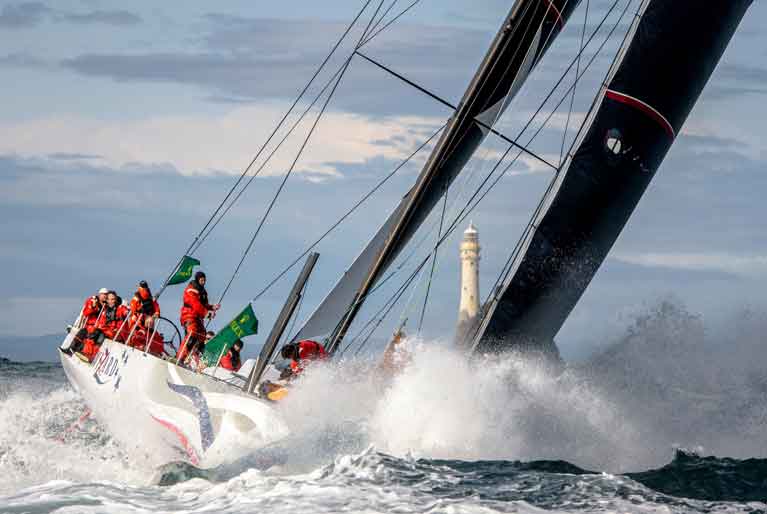 Wherever the Fastnet Race starts or finishes, it will still have to go round Ireland’s most famous rock. This is the American former Volvo 70 Wizard (David & Peter Askew), winner of World Sailing’s “Boat of the Year 2019” title, at the Fastnet Rock on her way to winning the Rolex Fastnet race 2019. Photo: Rolex
Wherever the Fastnet Race starts or finishes, it will still have to go round Ireland’s most famous rock. This is the American former Volvo 70 Wizard (David & Peter Askew), winner of World Sailing’s “Boat of the Year 2019” title, at the Fastnet Rock on her way to winning the Rolex Fastnet race 2019. Photo: Rolex
No matter what they do, Ireland’s impregnable Fastnet Rock remains immovably at the heart of it all. It is simply The Fastnet Race – full stop. But back in Plymouth, yet another historical challenge to their cherished maritime perception of themselves arose at the end of November. For they’d been thinking that, regardless of what might happen to the OSTAR and the Fastnet Race, the really big deal in their maritime history is their link to the Pilgrim Fathers sailing in the Mayflower from Plymouth to America in 1620.
Now there’s an anniversary to conjure with. 400 years to be celebrated in Plymouth in 2020 for something which has pure gold historical importance. But the people of Harwich on England’s East Coast say that Plymouth’s claims to the Mayflower story are only incidental. The ship began her voyage from the East Coast, they say, and only called briefly at Plymouth while heading west.
To underline their case, they’ve spent 2019 restoring the house in Harwich which was the home of Christopher Jones, Captain of the Mayflower, and in 2020 they look forward to greeting thousands of American visitors to Mayflower’s most tangible and authentic link.
And to the west of Plymouth, the people of the fishing port of Newlyn in Cornwall are also claiming that the Mayflower actually stopped there - albeit briefly – before the real beginning of the Transatlantic voyage, so that’s where the American tourists should be splashing their dollars.
Quite so. It would be time for the people of Plymouth to send for Francis Drake and his more ruthless shipmates to sort this out were it not for one indisputable geographic and historical fact. The place where the Pilgrim Fathers first landed in America in December 1620 is now known as Plymouh Rock. It is in Plymouth, Massachusetts. Harwich? Newlyn? Fuggedaboudit……..
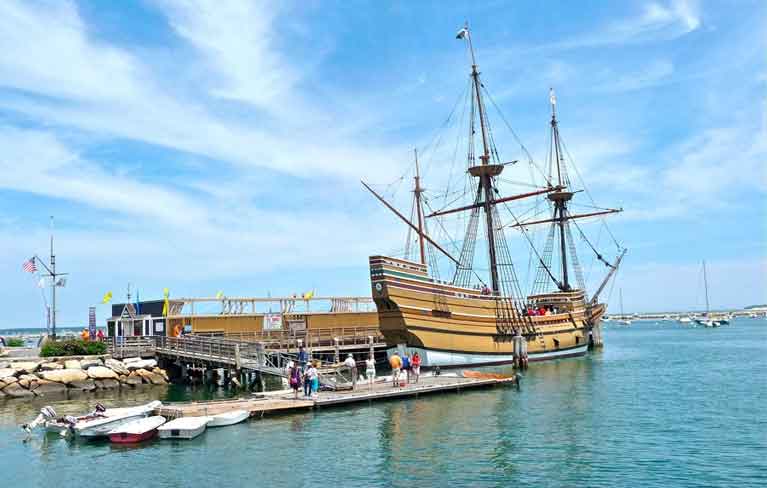 An inescapable fact of history and geography – Mayflower II berthed at Plymouth, Massachusetts.
An inescapable fact of history and geography – Mayflower II berthed at Plymouth, Massachusetts.
Meanwhile, Hobart and Tasmania have literally shaken off their links with a dismal penal colonial, past, and the place is re-born as a destination for the discerning, with a pleasant climate, fantastic scenery, and some great sailing people who can count winning the Sydney-Hobart race among their achievements. There’s no way they’re going to allow that particular link to be broken.
































































